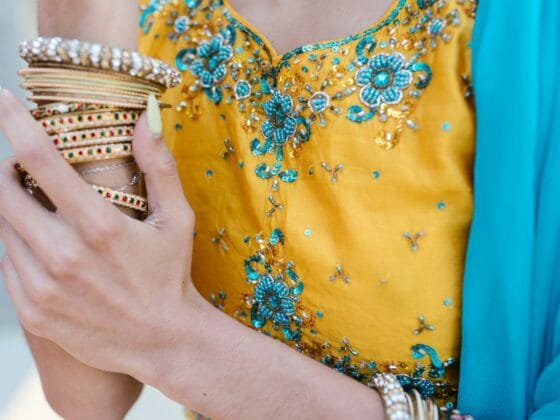All kinds of things can be made with crochet, but most beginners start with making blankets. When it comes to yarns for crochet blankets, there are multiple choices with different qualities and expected outcomes. I have been crocheting since childhood and started making afghans for my family. It’s not difficult, and the blankets are usually thick and warm, perfect for colder weather.
As you know, most afghan patterns use multiple yarns; they’re usually made up of at least three different balls of yarn and giving the blanket texture and creating a thickened look. Here are some suggestions for the best yarns to use in your next project so you’ll have an incredible finished product! The most important thing to consider when purchasing your supplies is the type of crochet hook you will use (each requires its specific type of yarn).
- If you want a light and airy look: Try using a DK weight (or light) yarn in cotton. This will create the perfect type of fabric for spring or summer blankets! I recommend Rico Essentials cotton DK
- For thicker and more durable blankets: Use a medium-weight wool yarn so you can secure it to the blanket and not have to worry about it unraveling or getting damaged quickly. Also, this type of yarn is very strong, making it perfect for children’s toys or objects that are often handled.
- If you want something truly special: Use a chunky weight acrylic yarn in your next project! With all three weights available, there’s no limit to what you can make with this popular type of yarn! It is incredibly versatile among crochet afghans because of its lightness but also has an incredible warmth factor due to its bulky size.
- Use a durable and strong wool/acrylic blend if you want it to last. Combining both types of yarn creates a thick and plushy feeling that is perfect for the colder months and will hold up under heavy wear and tear. Yarns like these are great if you plan on making items for children or teens because they will be well cared for and used often; best of all, your family members won’t have to worry about them falling apart quickly!
Related: what do you need to start crocheting!
Table of Contents
Is it easier to crochet with thick or thin yarn?
Based on my personal preference, I prefer to crochet with thin yarn as I find it easier to handle. The thicker the yarn is, the harder it feels and, thus, more challenging to manipulate. Also, the stitches are not as even as I’d like them to be compared to when using a thinner one.
On the other hand, some crocheters swear by using thick yarn as they claim that there is less risk of their hook or fingers getting caught in those chunky spaces between stitches. In conclusion, it’s all about what you’re used to and what works best for you! To figure out which type of yarn you prefer – try both and see! Good luck, and enjoy your project!
Best soft yarn for a crochet blanket
Soft yarns for crochet blankets are usually made from animal fiber, although some soft yarns are made from plant fibers such as cotton. Numerous soft yarn types provide the softness and warmth associated with natural hair fibers. Still, they require less complicated processing to make them suitable for use in textile goods – whether knitted or crocheted.
The main feature of many soft yarns is their elasticity, which allows the fabric formed by using them to stretch rather than break under tension, making this fabric stretchy. A non-elastic fiber will snap back into its original position once the load is removed because the molecules that compose it are aligned like a spring.
The softest yarns available (and softest to the touch) are made from fibers such as mohair or cashmere goat hair. These soft animal hairs have scales overlapping at an angle to create a series of tiny air pockets within the fiber. According to fiber chemists, this creates “the softness effect”.
Most soft yarns are spun using staple fiber made into regular yarn, but softness can also be added by blending with other fibers such as wool or silk. The softest yarns are generally synthetic and blend soft animal fibers with delicate plant fibers.
The best yarn for a summer blanket
Blankets for summer are usually made from several lightweight fabrics such as cotton, linen, or woven synthetic fibers like rayon. Lightweight yarns, used for crochet and knitting, are also good choices. Cotton is very popular as a blanket fabric because it is breathable and air wicks away moisture from the skin, keeping you warm even if it’s hot outside.
This also makes cotton an ideal fiber to use next to babies’ skin since it gives them room to breathe and will not irritate their delicate skin. Linen and Egyptian cotton can be incredibly cool and comfortable in warmer weather but may be more expensive than other fibers. Some people prefer wool yarns for summertime blankets because they are so breathable – they keep your skin cool even when you’re hot and sweating, but they may not be appropriate for certain people with sensitive skin or wool allergies.
It is where thick yarn comes in handy because it’s still very soft but will provide some warmth when the weather is hotter than usual.
You could also use a cotton/wool blend if you like; this offers some of the classic benefits of both fibers. Cotton tends to be more breathable than wool, while wool provides better insulation against cold. Blend them, and you get both properties in one blanket!
Thick, soft fiber can be used in summer crochet blankets made with lightweight fabrics such as cotton or linen; choose a lightweight, thick yarn and lightweight cotton or linen fabric, and you’ll get the best of both worlds: warmth and breathability.
A thick soft yarn for blankets
Thick, soft yarns are usually woolen yarns made from sheep hair, making them more durable than regular soft fiber that you find in a typical blanket.
Although thick fibers include natural fibers such as camel down or cashmere, the “soft thick” ones are manufactured mainly by blending fine fibers such as silk to create a smooth texture that feels luxurious underfoot and lends itself well to blending with other materials. Pilling can be an issue with soft thick, soft yarn, however.
The soft thick fibers are often blended to give them greater elasticity and softness so that they can be used in many different applications.
Best chunky yarn for crocheting a blanket
Both a brand and a style, Lion Brand Wool-Ease Thick & Quick Super Bulky is an excellent type of yarn to use for crocheting or making amigurumi projects. It contains 80% acrylic, which will be easy on your hands and wallet. Although its price can be found at around twenty dollars per ball, there are three hundred yards of material here which means that these balls will last you longer than regular expensive cotton yarns.
There’s also no need to worry about splitting since this material has no protruding fibers to catch on your fingers or your crochet hooks. Moreover, this type of Chunky Yarn can also leave less residue on your needles which is good for keeping all your materials in the best condition possible.
How much yarn do I need for a large crochet blanket?
Well, what are your dimensions looking like? Are you doing a simple granny square afghan or something more complex with varied stitch patterns? It’s challenging to give specific estimates since so many factors are involved in crafting. So let me offer some general guidelines to help you plan your project better.
For colorwork afghans, you’ll probably need at least three skeins of each color or four if it’s a particularly long stripe pattern. For solid afghans, you’ll probably need about three or four skeins of yarn for each pattern repeat. For example, a simple granny square afghan with a solid border would require at least 12 – 16 skeins, depending on your project size and how far apart you space your squares.
Your best bet is to buy one extra skein that the label suggests, just in case you run short toward the end. You might not have much yarn left over if it’s an extremely large blanket, but it never hurts to be prepared!












1 comment